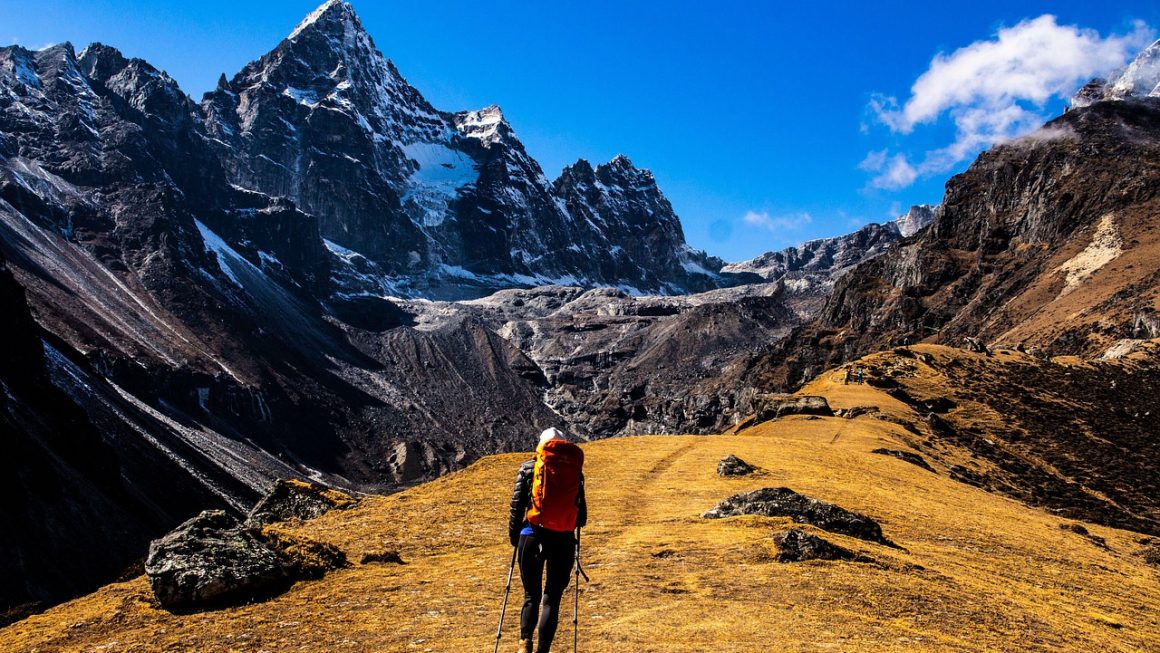Nepal—situated between two emerging powers, India to its south and China to its north—has long navigated a delicate geopolitical tightrope. Officially, Nepal has adopted a policy of “equi‑distance” or “non‑alignment,” striving to maintain balanced ties with both neighbors. However, political shifts, trade routes, and major infrastructure projects over the past 75 years have influenced Nepal’s external alignment in profound ways.
This article explores:
- Nepal’s foreign policy trajectory since the 1950s
- Evolving relations with India and China
- Key turning points: political realignments, blockades, and treaties
- Whether Nepal truly favors one neighbor over the other
- China’s financial exposure to Nepal and the effectiveness of its investments
1950s: Beginning of Diplomatic Ties and the 1950 Treaty
In 1950, Nepal signed the Treaty of Peace and Friendship with India, marking a period of close political, economic, and security cooperation. The agreement granted Indians and Nepalese special trading and residence rights, effectively embedding India in Nepal’s national framework.
That same decade, Nepal established formal diplomatic relations with the People’s Republic of China, becoming one of the first South Asian countries to do so, setting the stage for future bilateral engagement.
Key point: Nepal initiated strong ties with both neighbors early on—though the India‑Nepal bond appeared deeper due to proximity, culture, and economy.
2. Cold War and Panchayat Era: Balancing Power
The 1960s saw King Mahendra’s Panchayat system, banning political parties and centralizing control. Amidst a polarizing global environment, Nepal cautiously walked a centrist path—accepting aid from both India and China, but never fully aligning with either bloc.
Although blessed with Indian subsidies and Chinese border infrastructure (like the Sino‑Nepal Friendship Bridge in 1964 (en.wikipedia.org)), Nepal retained its independence, pursuing modernization without allegiance.
3. 1990s–2000s: Rise of Multiparty Democracy and Maoist Insurgency
Democracy was restored in 1990, ushering in political pluralism. But it was soon overshadowed by discontent that led to the Maoist insurgency (1996–2006), aimed at overthrowing the monarchy and restructuring society.
- India’s unease about Maoist relations set boundaries on direct support.
- China was wary of ideological contagion but later engaged diplomatically and economically post-conflict.
Nepal’s foreign policy during this turbulent time remained cautious, attempting to court both neighbors without committing.
4. 2008 Monarchy’s End and Federal Republic
After the 2006 peace accord and the 2008 abolition of the monarchy, communist-led governments began redefining Nepal’s foreign policy. These administrations sought to diversify economic partnerships, view China with greater favor, and reduce dependency on India.
Nonetheless, ties with India—for labor, remittances, cultural links—remained robust and indispensible.
5. The 2015 Blockade: A Turning Point
The 2015 unofficial blockade, widely attributed to India, severely disrupted Nepal’s fuel and supply chains. This had lasting repercussions:
- It fueled anti‑India sentiment across Nepal
- Accelerated Nepal’s pivot to China—signing a 2016 transit and trade agreement
- Accelerated infrastructure outreach to Beijing as a “Plan B” solution
Overnight, the narrative shifted from traditional Indian dependency to seeking alternatives—through China.
6. Belt & Road in Nepal: Opportunity or Risk?
Agreements and Signals
Nepal joined China’s Belt & Road Initiative (BRI) in 2017. Still, projects languished without a formal cooperation framework. In December 2024, during PM Oli’s visit, Nepal signed a detailed framework to kick-start BRI projects (reuters.com).
Investment Patterns and Caveats
China has since loaned Nepal over $310 million, with $216 million allocated to the Pokhara International Airport (reuters.com). Though officially non‑BRI, this Chinese‑funded project symbolizes Beijing’s growing footprint.
7. China vs. India in Infrastructure and Investment
| Sector | India | China |
|---|---|---|
| Trade/Transit | Main trade partner (~2/3 total), open border | New bilateral transit deals, alternative trade routes post‑2015 |
| Infrastructure | Pipelines, planned railways, highways | Airport, hydropower, cross‑border railway feasibility |
| Finance | Grants + loans via India-sponsored projects | Preferential loans (e.g., Pokhara airport, hydropower) |
Nepal remains economically tied to India but is increasingly courting Chinese infrastructure and funding — highlighting a nuanced, dual-track policy.
8. Political Party Positions
Nepal’s political stances largely reflect party platforms:
- Left‑leaning parties (CPN‑UML, Maoist Centre) align more closely with China, citing sovereignty and economic diversification.
- Centrist parties (Nepali Congress) lean toward India, wary of Chinese debt and transparency issues.
- Smaller parties adopt pragmatic positions, often shifting based on bargaining leverage.
The tug-of-war between pro‑India and pro‑China factions is emblematic of Nepal’s internal balancing act.
9. Border Disputes: Kalapani vs. Himalayan Stability
Kalapani–Limpiyadhura remains a flashpoint with India, leading Nepal to correct its official map in 2020. Meanwhile, Nepal’s border with China remains stable and free from major conflict. Strategic alignment has been shaped both by diplomatic ease and domestic political calculations.
10. Public Opinion and Media Discourse
Public sentiment has shifted:
- After 2015, younger Nepalis increasingly view China as a viable alternative.
- Rural communities, affected by blockades and poverty, see potential in Chinese-funded infrastructure.
- However, widespread concerns around “debt-trap diplomacy” and lack of transparency persist.
Nepali media and civil society remain critical, especially regarding China’s infrastructure deals—their utility and risks.
11. Economic Ties, Aid, & Labor Migration
India remains Nepal’s primary trading partner and labor-hosting destination. Remittances from India and the Gulf form the backbone of Nepal’s economy.
China’s investment is smaller but rapidly growing—mainly in key infrastructure projects. Nepal is effectively diversifying, if cautiously.
12. Military & Security Cooperation
- India and Nepal engage in joint exercises; India continues Gurkha recruitment and capacity building.
- China provides security training through Nepal’s Armed Police Force and civilian agencies, also collaborating on high-altitude border control.
Security partnerships reflect Nepal’s multipolar strategy.
13. Infrastructure Projects: Successes and Delays
Chinese-funded Hydropower and Airport
- Upper Marsyangdi A, a 50 MW plant co-developed and functioning since 2016 (jamestown.org, reuters.com, m.economictimes.com, cbap.cz, en.wikipedia.org).
- Pokhara International Airport—costing $305 million with $215 million in loan funding—has yet to attract international flights, raising red flags of inflation and debt risk (m.economictimes.com).
Stalled Projects
- China–Nepal Railway: pre-feasibility study completed; funding remains uncertain, and Nepal resists debt financing (en.wikipedia.org).
- Other BRI agreements lacked detailed implementation plans prior to 2024 (orfonline.org).
14. Section: China’s Debt to Nepal & Investment Challenges
Nepal’s public debt has tripled since 2019—from ₨1.4 trillion to ₨2.4 trillion by 2024, nearing 47 % of GDP .
The Pokhara Airport Burden
A case study of debt trap concerns:
- Loan-funded by Chinese state banks ($215 m).
- No scheduled international flights; radar and technical systems underutilized or faulty.
- Mounting servicing costs without revenue (m.economictimes.com).
- PAC investigation flagged inflated pricing, contractual breaches, and poor oversight (nepalnews.com).
Failed Hydropower and Railway Ventures
- West Seti and Budhigandaki hydropower designs (totaling US $1.24 billion) were terminated by Nepal in 2017–2018 after financing terms fell flat (stimson.org).
- China–Nepal Railway remains on paper due to funding hesitancy and technical concerns.
These stalled or failed projects highlight:
- Nepal’s inability to service loans without sustainable returns.
- Governance and feasibility issues in selecting and executing projects.
- Danger of dependency—mirroring global cases of Chinese debt diplomacy (en.wikipedia.org, cbap.cz, defstrat.com, english.pardafas.com).
15. Recent Developments and the Way Forward
In late 2024:
- PM Oli’s visit to Beijing led to a signed BRI framework (reuters.com, english.pardafas.com).
- Domestic debate erupted—Nepali Congress opposed loan-based lending, fearing Sri Lanka-style debt crisis (reuters.com).
- The Pokhara Airport’s operational delays and debt challenge remain unresolved.
Nepal faces a critical choice: leverage Chinese funding for growth or risk long-term economic burdens without robust revenue-generating infrastructure.
Conclusion: A Balancing Act, Not a Tilt
- Nepal is neither fully pro‑India nor pro‑China—it is pragmatic, not ideological.
- While India remains vital economically and culturally, China is emerging as a key partner in infrastructure and alternative funding.
- Political factions in Nepal reflect this dichotomy.
- Yet, economic realities—debt limitations, governance, and project follow-through—will shape future alignment.
Nepal seeks a “sweet spot”—one where it benefits from both powers while preserving autonomy, avoiding debt pitfalls, and safeguarding national interests.
The next decade will determine whether the Pokhara Airport becomes a beacon of connectivity or a financial sinkhole—and whether Nepal’s non-alignment continues to pay diplomatic and economic dividends.




